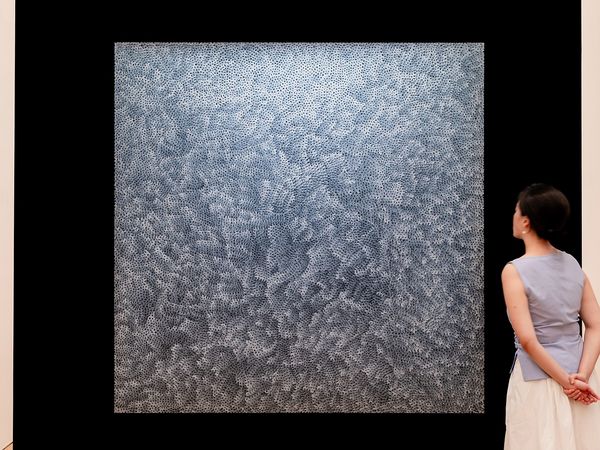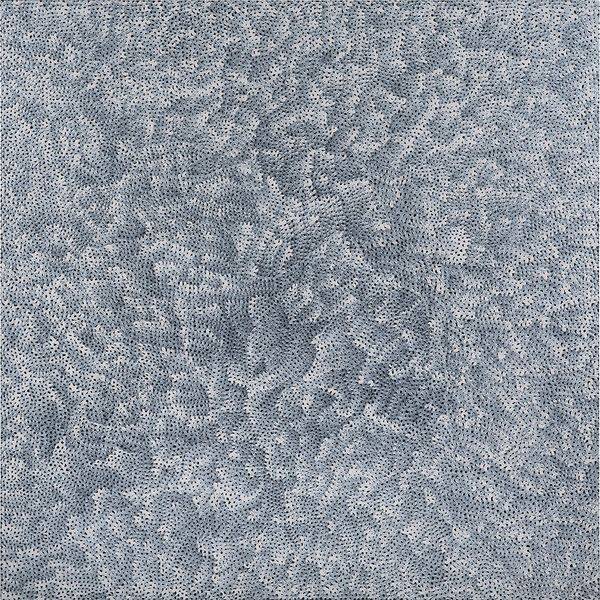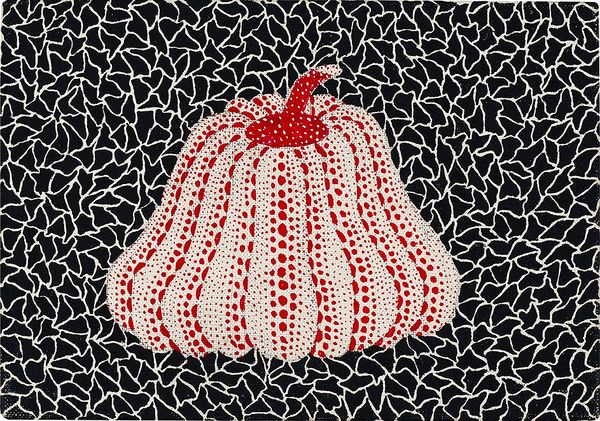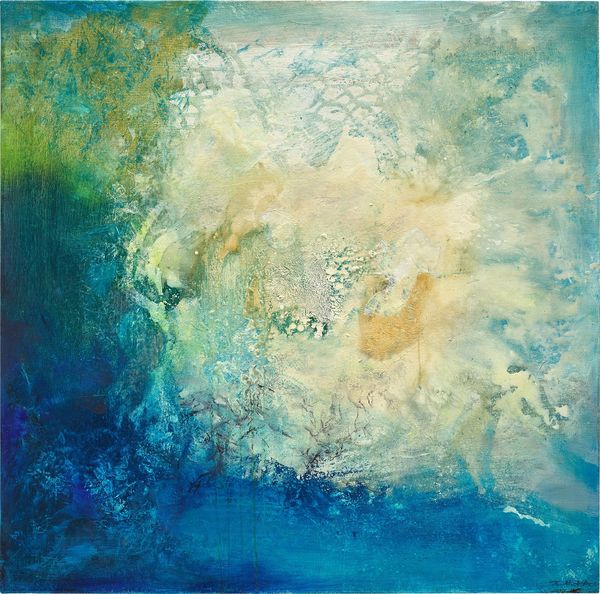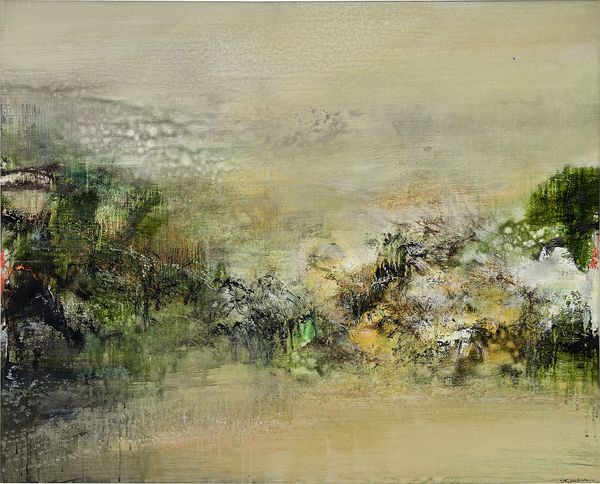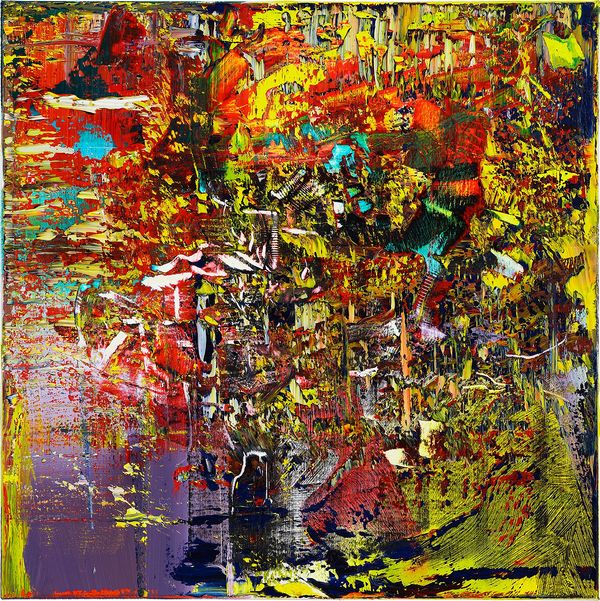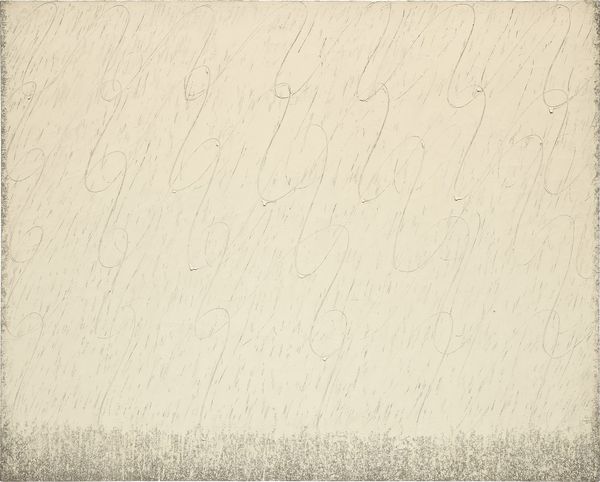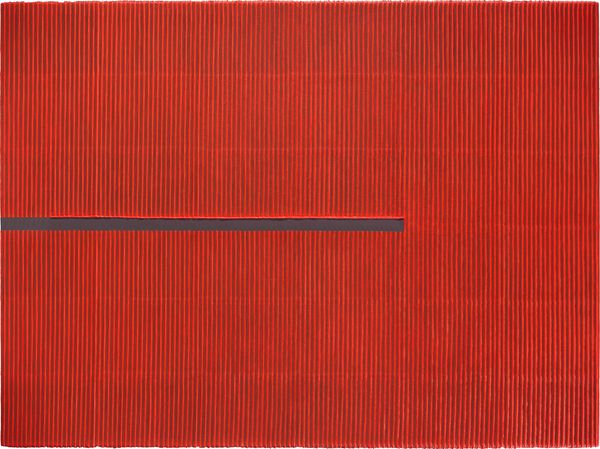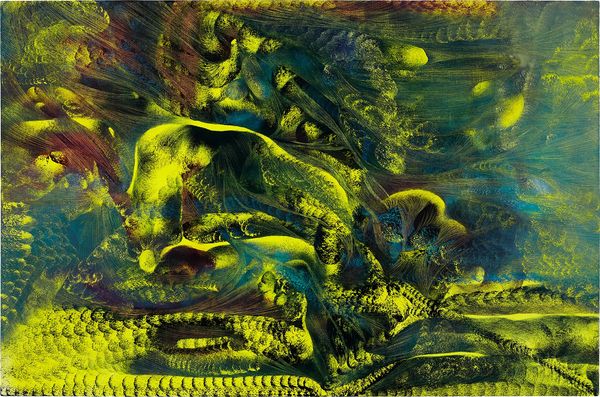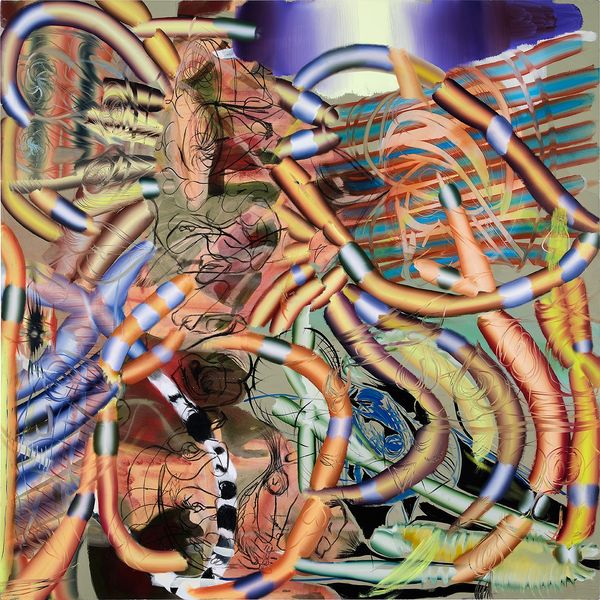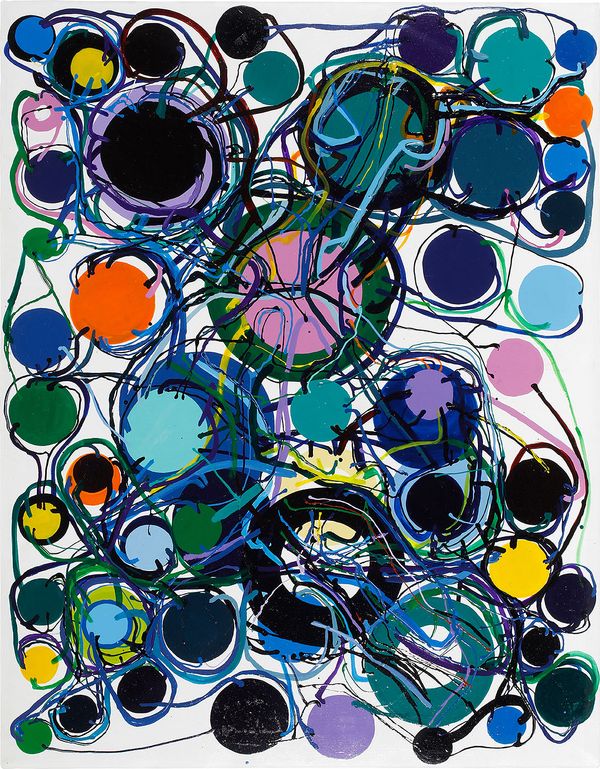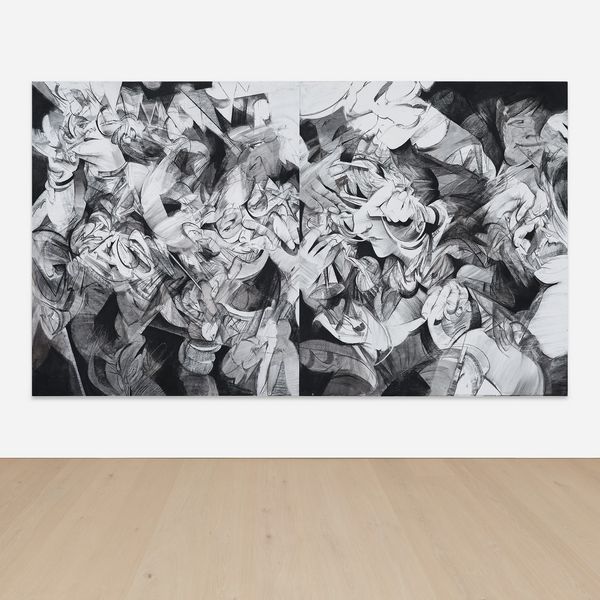Modern & Contemporary Art Hong Kong Auctions Preview
In the sphere of abstract art, true creativity emerges not merely in the final composition, but also in the intimate act of creation itself. Phillips’ Hong Kong Modern & Contemporary Art Spring Sales 2024 delve into this intricate process, highlighting the physical and emotional imprints left by artists as they commune with their mediums. Each piece is a testament to the artist’s presence, with their essence captured in every stroke and texture.
Every mark, every stroke, is laden with the artist’s innermost thoughts and emotions, inviting viewers to partake in a profound, shared experience.
Yayoi Kusama
Yayoi Kusama, INFINITY NETS (ZGHEB), 2007. Estimate: HK$20,000,000 – 30,000,000 / US$2,560,000 – 3,850,000. Modern & Contemporary Art Evening Sale, 31 May.
“I would cover a canvas with nets, then continue painting them on the table, on the floor, and finally on my own body. As I repeated this process over and over again, the nets began to expand to infinity. I forgot about myself as they enveloped me, clinging to my arms and legs and clothes and filling the entire room.” — Yayoi Kusama
Born in 1929 in Japan, Yayoi Kusama is among the most internationally acclaimed Japanese artists of the 20th and 21st centuries. She is best known for her obsessional motifs such as nets and polka dots. The nets motif, central to her work since 1958, originated from her struggle with mental illness, especially hallucinations that violently threatened her psychological well being.
Kusama’s intense psychological struggle is mirrored by her physical dedication to her art. Beneath the mesmerizing beauty of her net paintings lies a commitment to laborious process. The artist spends countless hours creating these works, repetitively drawing looping marks until they gradually cover and eventually exceed the monumental canvas. She imbues her process with restless, pulsating energy.
The present lot, incorporating sophisticated tonal gradations and spatial awareness, is an exemplar of the artist's mastery. Each stroke evolves into swirling patterns, creating a great tension that evokes internal contemplation. The net motif becomes the very conduit through which Kusama constructs her own “theory of everything” to embrace the vastness and interconnectedness of existence. The interplay between precision and organic flow invites deep engagement.
Net paintings are among Kusama’s most sought-after works in the art market. In May 2022, at Phillips’s New York Evening sale, Untitled (Nets) from 1959 achieved a remarkable record-breaking price of US$10.5 million — the highest price ever paid for a work by a female artist.
Yayoi Kusama, Pumpkin, 1982. Estimate: HK$3,200,000 – 4,200,000 / US$410,000 – 538,000. Modern & Contemporary Art Day Sale, 1 June.
An early piece in Yayoi Kusama’s extensive series of iconic polka-dotted pumpkins, Pumpkin, 1982 stands out for its striking red against white coloration set against a pattern of black and white nets that covers the background infinitely. As another of her signature motifs, the net symbolizes both a whimsical disruptor and a cosmic unifier, reflecting the artist's vision of obliterating herself into the universe.
“Repetition of the same patterns, an action which stems from my disease, is applied in my writing just as it is in my artwork. Dreams and hallucinations are actually occurring. This obsessional image is what I have transformed my disease into, and is therefore, to me, irreplaceable.” — Yayoi Kusama
Kusama’s pumpkins hold deep personal significance rooted in her childhood experiences growing up in rural Japan during WWII, where she first encountered pumpkins while walking with her grandfather. For her, the pumpkin evokes cherished childhood memories and stands as one of her most beloved motifs. It attains almost mythical significance for her. These early encounters with pumpkins at a young age provided a soothing influence during the time when she began experiencing psychologically traumatic hallucinations.
Zao Wou-Ki
Zao Wou-Ki, 30.09.97, 1997. Estimate: HK$6,000,000 – 10,000,000 / US$769,000 – 1,280,000. Modern & Contemporary Art Evening Sale, 31 May.
Born in Beijing in 1920, Zao was deeply rooted in Eastern sensibilities. His work resonates with the Taoist idea of the “infinite,” exemplifying both the infinite universe and his infinite exploration of it as an artist. The artist arrived at his East-meets-West synthesis less out of stylistic considerations than as a result of the upheavals and cultural migrations in his life.
30.09.97 is a fusion of blue, yellow, white, and green hues, evoking the limitless depth of sea and sky. The rhythmic blending and separation of colors captures life’s perpetual motion. Meticulously layered rose tints add mystery, inviting viewers to explore the painting's subtle intricacies. It is more than a painting; it is a journey through emotions and imagination and a window into the depths of existence.
Created in 1997, the present work represents the culmination of insights, techniques, and life experiences Zao accumulated over 50 years. By the 1980s and '90s, the artist had achieved international recognition in Europe, the U.S., and Asia. His later works from this period retain the tension of those of the 1960s while simultaneously elevating the expression of space. His trips to China in the 1980s and 1990s provided Zao renewed inspiration, as he moved away from the interwoven lines and symbols of his earlier works and came to focus on a richer inner world, embracing negative space to capture the true essence of abstract painting.
Zao Wou-Ki, 25.11.81, 1981. Estimate: HK$7,000,000 – 10,000,000 / US$897,000 – 1,280,000. Modern & Contemporary Art Day Sale, 1 June.
Fresh to the market, 25.11.81 was painted in 1981 during an important period of creation for the Chinese-French Modern master Zao Wou-Ki. This was the year that the artist was honored with his first major retrospective in France, a testament to his having achieved the heights of international recognition. By this time, he had already been in Paris for over thirty years. One sees the refined yet confident brushwork of a mature master.
A beautifully intricate horizontal band of detail runs across the picture pane, with dark strokes of oil paint resembling both calligraphy and the shapes of the natural world. As one scans the canvas, a vast stretch of verdant mountains emerges. Zao employs a linear perspective to create the illusion of atmospheric depth, using nuanced strokes of autumnal green and milky white to reveal and conceal subtle layers of ochre and mustard yellow. This piece exemplifies Zao’s exploration of the compositional challenges in abstraction. Mastery of such detail requires a deep understanding of both Eastern and Western art sensibilities — which Zao was among the first to bridge.
With an immense global presence, Zao's creations are part of over 150 public collections in 200 countries, including prominent institutions like MoMA, the Guggenheim, and Tate Modern.
Gerhard Richter
Gerhard Richter, Abstraktes Bild (947-5), 2016. Estimate: HK$26,000,000 – 36,000,000 / US$3,330,000 – 4,620,000. Modern & Contemporary Art Evening Sale, 31 May.
“With a brush you have control. The paint goes on the brush and you make the mark. From experience you know exactly what will happen. With the squeegee you lose control.” — Gerhard Richter
A tremendously influential powerhouse of contemporary art, Gerhard Richter was born in Dresden in 1932 and came of age during a period of intense political and cultural change. A towering figure in contemporary art, his Abstraktes Bild series has attracted widespread interest from many prestigious collections.
Richter marries chance and control, utilizing techniques like squeegeeing, blurring, and layering to create complex surfaces. His process involves etching, scraping, and smearing paint across the canvas, revealing underlying layers. This meticulous yet spontaneous technique results in a harmonious blend of intention and serendipity, where each element contributes to a captivating whole.
Abstraktes Bild (947-5) comes from a significant phase in the artist’s career, marking his decisive return to abstract painting after experimenting with digital technologies and chance-based lacquer techniques in the late 2000s and early 2010s. Picking up the squeegee again, he combines vibrant and subdued hues to generate tension and harmony. The painting’s richly textured surface invites close examination, with translucent and opaque layers creating depth and visual intrigue. This work stands as a testament to Richter’s mastery, pushing the boundaries of abstraction and inviting viewers into a world of contemplation and introspection. Today, he continues to explore the relationships between color and form, abstraction and representation, and remains a paragon of the genre in art history.
Park Seo-Bo
Park Seo-Bo, Écriture No. 67-78-79, 1979. Estimate: HK$3,500,000 – 5,500,000 / US$449,000 – 705,000. Modern & Contemporary Art Evening Sale, 31 May.
“What I’ve realized over the years is that I must empty myself to soak up elements that I need, and to make myself more whole. And in order to empty myself, I must perform repetitive actions.” — Park Seo-Bo
A pioneering figure of the Dansaekhwa movement, South Korean artist Park Seo-Bo is renowned for his Écriture series, which he began in the early 1960s. This series reflects a meditative and spiritual journey, where the act of repeatedly drawing lines becomes a practice akin to breathing. Park's work embraces the tactile qualities of Dansaekhwa and the Korean philosophy of harmony with nature, creating a timeless visual language.
In Écriture, which means 'writing' in French, Park combines painting with the rhythmic patterns of calligraphy. Using a pencil, he creates meticulous lines on the canvas, a practice rooted in East Asian tradition. This repetitive action is not merely for aesthetic pleasure but serves as a meditative process, deconstructing the self and embracing non-purposefulness.
Écriture No. 67-78-79, a quintessential example of his signature Écriture series, is both an erasure and creation, echoing the disciplined practice of calligraphy while transcending it to capture the essence of being. Perfectly capturing the artist’s philosophical journey and artistic evolution, the present work was widely shown as part of the ‘Park Seo-Bo Retrospective’ in the National Museum of Contemporary Art in Seoul in 1991.
Park Seo-Bo, Ecriture No. 110507, 2011. Estimate: HK$1,800,000 – 2,800,000 / US$231,000 – 359,000. Modern & Contemporary Art Day Sale, 1 June.
Ecriture No. 110507 is a visually striking piece within Park Seo-Bo’s most celebrated series. The vivid red — inspired by the autumnal hues of Japan’s maple forests — infuses the work with an otherworldly sensation, inviting viewers to embark on a spiritual journey that reflects the artist’s meditative artistic process.
“In my art, the process is more important than the result.” — Park Seo-Bo
Executed in 2011, this piece marks a later phase in Park’s career, when he began incorporating hanji, a traditional Korean paper, into his works. The use of hanji allows for a rich texture, with repetitive marks creating a rhythmic dynamism. Park meticulously molds the hanji into furrows, reflecting the movement of his body and creating a balance between positive and negative spaces. The linear ridges that run the breadth of the canvas add a beautiful three-dimensionality to the otherwise 2D piece.
Park Seo-Bo's works are celebrated globally and featured in such prestigious collections as the Guggenheim and MoMA. His exhibitions, including those at White Cube and Art Basel, highlight the enduring relevance and profound impact of his artistic journey.
Lucy Bull
Lucy Bull, Claps Jaw, 2019. Estimate: HK$2,800,000 – 3,500,000 / US$359,000 – 449,000. Modern & Contemporary Art Evening Sale, 31 May.
“It's more about psychic energy than anything. I allow myself to get lost in the making of the paintings, which allows me time to enter this sort of fugue state and get lost in the sauce.” — Lucy Bull
Lucy Bull immerses viewers in a visceral experience of color and form, with an abstract palette that evokes sensory rather than rational responses. Her 2019 work Claps Jaw exemplifies this approach, transforming the canvas into a realm of vibrant visual stimuli that mesmerizes and captivates.
Claps Jaw is a visual feast of motion and intensity that draws viewers into a lush, untamed wilderness. The painting's dynamic colors — opulent greens, chartreuse yellows, and hints of peacock blue — shift and dance like kaleidoscopic patterns. Each brushstroke, meticulously choreographed, contributes to the work’s enigmatic allure, evoking a raw power that resonates deeply.
Bull’s art is reminiscent of Lyrical Abstraction, prioritizing emotional intensity over figurative accuracy. Joan Mitchell and Helen Frankenthaler come to mind. Her gestural brushwork and rich visual field create a tapestry of colors that evoke liberated spirituality.
Lauren Quin
Lauren Quin, Second Mercury Mounts, 2020. Estimate: HK$450,000 – 550,000 / US$57,700 – 70,500. Modern & Contemporary Art Evening Sale, 31 May.
Lauren Quin’s Second Mercury Mounts makes a profound impact with its masterful composition and rich chromatic complexity. This piece evokes the freedom and energy of Abstract Expressionism, blending vibrant Day-Glo tubes with sharp black pencil sketches. The dynamic interplay of colors and multi-layered symmetries creates an organic, dreamlike quality reminiscent of a waking dream.
Quin’s rise to prominence, though swift, is rooted in extensive practice and study. Her unique style emerged during an artist residency in Maine, where the pitch-black woods inspired her signature imagery. Influenced by Fernand Léger’s tubular shapes, Quin infuses her work with the intricacies of human anatomy and the surreal essence of the subconscious.
The artist's multi-layered method involves a base layer of tubes, intersecting lines, and a wide range of visual material from her personal archive. This technique, combined with carvings and prints, results in a textured, immersive experience. The larger dimensions of Second Mercury Mounts allow viewers to appreciate its intricate details and engage deeply with its layered narrative.
Lauren Quin’s work has been exhibited globally and is featured in public collections worldwide.
Andy Warhol
Andy Warhol, Dollar Sign, 1981. Estimate: HK$2,800,000 – 3,800,000 / US$359,000 – 487,000. Modern & Contemporary Art Day Sale, 1 June.
“I like money on the wall. Say you were going to buy… a painting. I think you should take that money, tie it up, and hang it on the wall.” — Andy Warhol
Created at the height of Andy Warhol’s career, Dollar Sign (1981) is a quintessential example of his iconic series of paintings featuring the dollar sign symbol, which represent the artist’s exploration of commodity culture. This work encapsulates the relationship between art and wealth through the iconic dollar symbol, a motif Warhol repeatedly used to blur the lines between high and low art.
The Dollar Signs are among Warhol's most potent and essential images, rivaling the historic Campbell's Soup Cans from 1962 in their bold redefinition of what constitutes art. Through the Dollar Signs, Warhol unabashedly said that "big-time art is big-time money," and, with his brutal honesty, he bluntly depicted the symbol of money as the symbol for art.
Conversely, due to their vibrant colors and extravagant drawing and design, the Dollar Signs are simultaneously exceptionally artistic in their construction. Similar to Warhol's greatest works, they simultaneously strip down and glamorize the subject, rendering it both mundane and alluringly captivating.
Atsuko Tanaka
Atsuko Tanaka, 88D, 1988. Estimate: HK$1,400,000 – 2,400,000 / US$179,000 – 308,000. Modern & Contemporary Art Day Sale, 1 June.
“Tanaka’s paintings deeply affect the viewer’s spirit, suggesting that the boundary of ‘self’ can be changed, structuring a new relationship to the world.” — Mizuho Kato
Atsuko Tanaka was a pivotal forefront member of the legendary Gutai group — Japan’s first post-war radical art movement, which was founded in 1954 — and she is renowned for embodying the group’s innovative and experimental spirit in her work. During the Second Gutai Exhibition in 1956, the artist famously engaged in a captivating dance, drawing lines and shapes in the air with the flashing neon light of her Electric Dress. This provocative performance — with its intense weight, heat, and luminosity — boldly challenged preconceived notions of the relationship between oneself and the material, placing Tanaka’s own subjectivity within a precarious state.
Tanaka’s exploration of painting following her involvement with Gutai translates the ephemeral and immaterial Electric Dress performance into a tangible form. Despite being a two-dimensional piece, 88D is full of drama with vivid colorization in black, blue, orange, and yellow. With each brushstroke, Tanaka immerses herself more fully in the canvas, leaving behind not only physical traces of her engagement but also marks that measure the spatial and temporal reach of her corporeal presence.
Anna Park
Anna Park, Untitled, 2021. Estimate: HK$1,200,000 – 2,200,000 / US$154,000 – 282,000. Modern & Contemporary Art Day Sale, 1 June.
“My work now operates from the memory of people or places and what that distortion feels like, as opposed to a depiction of reality. Our memories are intrinsically fragmented, discombobulated.” —Anna Park
Park's work captures the fragmented, discombobulated nature of memory, creating compositions that are both unsettling and intriguing. In Untitled, the composition features a spectacled grinning face here; a coy side-eye there; a set of bared teeth over there. The overall result is one that is phantasmagoric, discombobulated, and filled with dizzying intrigue — a compelling snapshot, perhaps, of contemporary life.
Working primarily in monochromatic tones, Anna Park's charcoal and graphite creations straddle the line between reverie and memory, combining figuration and abstraction through a flurry of rhythmic lines, shapes, and tones.
Despite her young age, Park's mature oeuvre has already garnered much recognition, with pieces included in the collections of notable figures like Brian Donnelly (KAWS) and institutions such as the Museum of Fine Arts, Houston.
